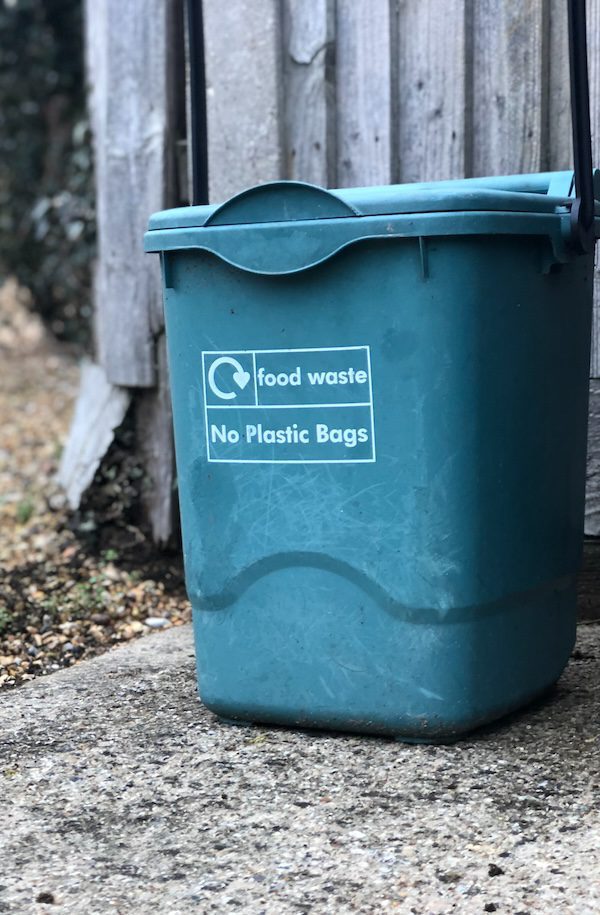The Carbon Footprint of Your Food
- Education
- -
Your food choices can affect your carbon footprint, but by making a few small changes you can minimise your contribution.
When talking about our carbon footprint we often talk about our car usage or how much energy we use heating our homes, never thinking about the apple we just purchased from our local supermarket or the steak we had for dinner the night before.
Foods produce differing amounts of greenhouse gases, and therefore eating foods with a lower level of GHG production can reduce the carbon footprint of your food.
What's it all about?
- Greenhouse gases are behind climate change, and our carbon footprints directly affect these
- Different foods have different carbon footprints - learn how to make choices to reduce your impact
- By employing multiple practices at home, you can help reduce your own food waste significantly, improving your carbon footprint
- Meal planning, using up leftovers, and storing food appropriately are just some of the methods that can be used
Why is it important to reduce Greenhouse Gases?
We all know greenhouse gases cause climate change, which is devastating for our planet. Increases in greenhouse gases lead to diminishing snowpack, rising sea levels and an increase in droughts and forest fires which we have already experienced in the last year. By recycling, walking or cycling more and being mindful of your food choices, you can do your part to reduce your own emissions.
We all need to take action to reduce our emissions and protect the environment, it’s a team effort!
What is the Relationship Between GHGs and Your Carbon Footprint?
Your carbon footprint is the measure of the GHGs (mainly CO2) your activities release into the atmosphere. This includes everything from the emissions from your petrol-fuelled car to the manufacturing method of the clothes you wear.
Certain activities are considered carbon-neutral (or net-zero), which means that the number of GHGs released was offset by something. i.e. planting enough trees to offset your company’s carbon emissions. Our food, on the other hand, produces a significant carbon footprint.
So how can we track our food footprint, and more importantly, how can we reduce it?
What’s the Carbon Footprint of Your Food?
Your food’s carbon footprint is calculated based on the activities required to bring it to your plate. For example, let’s consider an apple from farm to plate.
The farmer plants the tree, fertilises it, and waters it. After the tree fruits are harvested, packed and transported to the market or warehouse for distribution, you then buy them and take them home.
Each activity, from planting the tree to finally getting it to your home, releases some CO2.
For an apple, it’s generally quite low. An apple tree lives for several years and, in its lifetime, will absorb quite a bit of CO2 from the atmosphere. As a result, it has a relatively small carbon footprint.
Plant-based food has a smaller carbon footprint compared to animal-based food, even if it doesn’t grow on trees.
What’s the Carbon Footprint of Meat?
Meat production has a higher carbon footprint compared to plant-based food because plants absorb CO2.
The carbon footprint of meat varies according to the type of meat. For instance, poultry and pork have a lower carbon footprint than red meats like beef and lamb because breeding livestock requires space. Often, that space is created by clearing trees. Cows, in particular, require a large piece of land to graze on whereas poultry and pigs require less space. Cows also produce greenhouse gases in their stomachs. In the process of breaking this down, they produce CH4 (methane), which they release in the form of flatulence.
Meat products also have a shorter shelf life than plant-based foods. They have to be consumed within a short time window. Grains and dried legumes, on the other hand, can be stored for months under the right conditions.
Even vegetables last longer than meat. And, when they start decaying, it is possible to cut out the affected part and use the rest. Meat, once it starts going off, cannot be consumed at all.
So, not only is meat producing more greenhouse gases in the production process, but it also has to be discarded relatively quickly. That contributes to food waste.
Should You Stop Eating Meat to Reduce Your Carbon Footprint?
1. Reduce Food Waste
Food waste is a huge problem. In the UK, we annually generate around 10 million tonnes of food waste, of which nearly 70% is from households. A large portion of the edible food waste could have been consumed but wasn’t.
The issue with food waste is that, unless it is recycled, it can end up in landfills where it decomposes, producing CO2, methane, and water vapour—all of which are GHGs.
That means the carbon footprint of your food is now higher than it would have been if you’d consumed all of it!
There are also alternative ways to combat food waste such as:
- Too Good To Go: Helps connect consumers with local restaurants, cafes or bakeries that may have excess food going to waste. It allows consumers to buy these items at low prices.
- Veg Boxes: Companies like Wonky Veg boxes and Oddbox are subscription boxes of fruit and veg that were not uniform enough for supermarket sale.
- Olio: This app connects you with your local supermarket AND neighbours, letting you know when unwanted food is going to waste.
These apps help redirect food that would have been wasted by supermarkets and sell it at a lower price to the public.
By reducing your food waste, you are taking control of your carbon footprint in a very real, measurable way.
2. Reduce Food Waste At Home
You can reduce food waste at home by becoming more efficient with your grocery shopping, planning ahead and only buying what you need.
Inspect your fridge for leftovers and use them before they become unpalatable.
Love Food, Hate Waste has some delicious recipes from leftovers, if you need inspiration.
Most food waste comes from households and not the food and hospitality business which implies that people may be buying more than they can consume or storing food incorrectly.
As a result, a total of 9.5 million tonnes (costing around £19 billion) of food is thrown out each year, with nearly three-quarters of that coming from people’s homes.
While some of it is inedible, in the form of peels, shells, bones, and seeds, up to 70% of it could have been consumed.
Your food is likely to end up in a landfill where it will decompose in the absence of air and produce methane (CH4). Most households will be supplied with food waste bins by 2026 which will help alleviate this issue.

3. Recycle Your Food Waste
Ideally, there would be no food waste. However, real life is seldom ideal. There will always be some wastage, whether it is in the form of inedible parts, like bones, peels, seeds, and shells or uneaten food.
The best way to offset it is to recycle your food. The top of the waste hierarchy for recycling food is Anaerobic Digestion. In this process, food waste is made into a slurry and “fed” to a specific combination of bacteria.
These bacteria consume the material and produce methane. Now, you might wonder how that’s a good thing, with methane being a GHG.
The difference, in this case, is that methane is captured and used to create renewable energy. It is not allowed to escape into the atmosphere. Instead, it replaces other fossil fuels for heat and electricity generation, making it a very sustainable and environmentally friendly energy source.
Moreover, the digested slurry is used as a Nitrogen-rich bio fertiliser, completing the cycle of your food—from the soil and back into the soil.
4. Lower Your Meat Consumption
Whilst you may enjoy a meat-based diet, you can lower the amount you eat. You can choose a day in the week to eat “vegetarian” or “vegan,” and use this day to enjoy plant proteins and vegetables instead of animal protein – try out new recipes.
You could also choose to reduce your weekly meat portion size by adding plant protein or more vegetables to your diet, this will make a substantial impact on your carbon footprint.
Remember these simple steps to reduce food waste:
Meal Plan
Use Up Leftovers
Reduce Meat Consumption
Store Food Correctly
Want to Do More to Lower Your Food Waste Impact?
As a food waste producer, collector or local authority, you can speak to us about recycling your food waste. We are also happy to discuss your processes to see how you could reduce waste.
As a concerned citizen of the planet, if you would like your food waste to be recycled instead of being thrown out with general rubbish, speak to your council about collecting food waste separately. They can then contact us to recycle it, effectively reducing the carbon footprint of your food.



